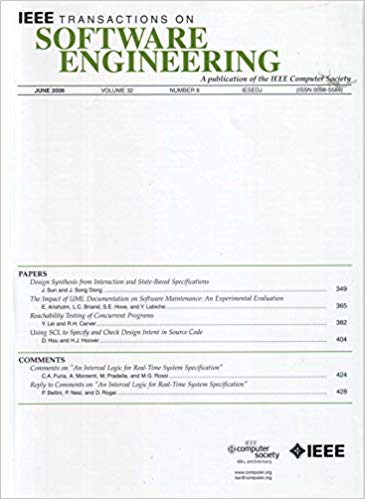摇篮:一种考虑事故因果关系的基于场景知识图的事故场景生成方法
IF 5.6
1区 计算机科学
Q1 COMPUTER SCIENCE, SOFTWARE ENGINEERING
引用次数: 0
摘要
具有长尾特征的事故场景对于提高自动驾驶汽车(AVs)的功能至关重要。将这些场景整合到训练过程中可以增强对复杂情况的适应能力。然而,由于事故数据的随机性和收集方面的挑战,事故数据的稀缺性限制了这种整合。为了解决这个问题,提出了一个名为CRADLE的框架,利用因果强化学习(RL)和深度学习来生成事故场景。在极其有限的数据条件下,CRADLE能够构建高度多样化的事故场景数据库,同时确保事故原因的一致性。首先,构建了一个场景知识图,其中包含了一个场景图和一个事故因果图。然后,对真实驾驶数据进行训练,建立场景图时间预测模型,生成场景图的采样空间。随后,开发了因果推理模块,建立了时间场景图与事故因果图之间的映射转换机制。最后,引入图相似度度量方法,指导RL模型在场景图采样空间内有序采样,保证因果控制的场景生成。应用该方法生成了同时变道和多变道两种变道情况下的事故场景。这些场景被纳入自动驾驶算法的闭环自进化过程中。实验结果表明,构建的事故场景数据库显著提高了算法的适应性,将自动驾驶汽车的碰撞率降低了约76%。本文章由计算机程序翻译,如有差异,请以英文原文为准。
CRADLE: An Accident Scenario Generation Method Based on Scenario Knowledge Graph Considering Accident Causation
Accident scenarios with long-tail characteristics are essential for advancing autonomous vehicles (AVs) functionality. Integrating such scenarios into the training process enhances adaptability to complex situations. However, the scarcity of accident data, due to their randomness and collection challenges, limits this integration. To address this issue, a framework named CRADLE is proposed, leveraging causal reinforcement learning (RL) and deep learning for accident scenario generation. Under extremely limited data conditions, CRADLE enables the construction of a highly diverse accident scenario database while ensuring consistency in accident causation. First, a scenario knowledge graph is constructed, incorporating both a scenario graph and an accident causation graph. Then, a scenario graph temporal prediction model trained on real driving data, generates a sampling space for scenario graphs. Subsequently, a causal inference module is developed to establish a mapping and transformation mechanism between temporal scenario graphs and accident causation graphs. Finally, a graph similarity measurement method is introduced to guide RL model in orderly sampling within the scenario graph sampling space, ensuring causally controlled scenario generation. The proposed method is applied to generate accident scenarios for two lane-changing situations: simultaneous lane changes and multi-lane changes. These scenarios are incorporated into the closed-loop self-evolution process of the autonomous driving algorithms. Experimental results demonstrate that the constructed accident scenario databases significantly improve the algorithm adaptability, reducing AV collision rates by approximately 76%.
求助全文
通过发布文献求助,成功后即可免费获取论文全文。
去求助
来源期刊

IEEE Transactions on Software Engineering
工程技术-工程:电子与电气
CiteScore
9.70
自引率
10.80%
发文量
724
审稿时长
6 months
期刊介绍:
IEEE Transactions on Software Engineering seeks contributions comprising well-defined theoretical results and empirical studies with potential impacts on software construction, analysis, or management. The scope of this Transactions extends from fundamental mechanisms to the development of principles and their application in specific environments. Specific topic areas include:
a) Development and maintenance methods and models: Techniques and principles for specifying, designing, and implementing software systems, encompassing notations and process models.
b) Assessment methods: Software tests, validation, reliability models, test and diagnosis procedures, software redundancy, design for error control, and measurements and evaluation of process and product aspects.
c) Software project management: Productivity factors, cost models, schedule and organizational issues, and standards.
d) Tools and environments: Specific tools, integrated tool environments, associated architectures, databases, and parallel and distributed processing issues.
e) System issues: Hardware-software trade-offs.
f) State-of-the-art surveys: Syntheses and comprehensive reviews of the historical development within specific areas of interest.
 求助内容:
求助内容: 应助结果提醒方式:
应助结果提醒方式:


